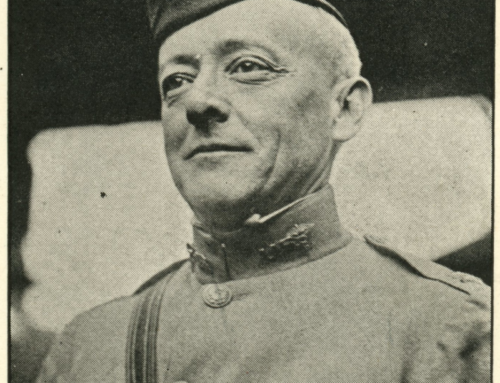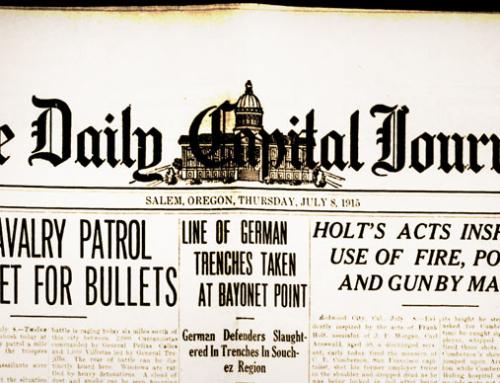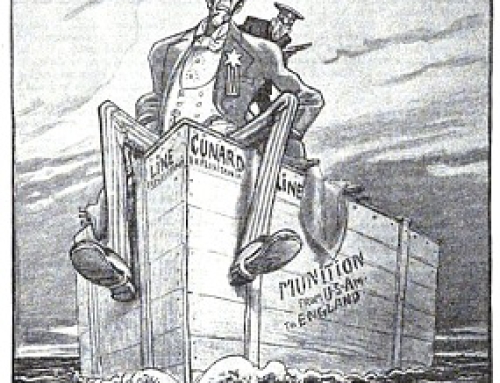by Richard van Pelt, WWI Correspondent
“Line of Retreat Is Strewn With Dead; Cannon Abandoned” headlined an article by William Philip Sims for the United Press. Reporting that the danger of a siege had ended, the military governor of Paris, General Gallieni, notified the government that it could be brought back from Bordeaux “at any time.” Sims reported his visit to the front:
There was no doubt today that the German offense was completely broken. I have just returned from an inspection of the front in the vicinity of Meaux, Chateau Thierry and Soissons. I made the trip in an automobile placed at my disposal by the military authorities and saw for myself how perfectly the French organization is working everywhere.
Evidence of admirable co-operation were observable on every hand.
I reached Soissons during an artillery duel, the opposing batteries being concealed in the hills above the town. The German guns alternately dropped shells upon the French artillery and poured shrapnel into the ranks of the French infantry.
An All Day Duel.
The duel continued from sunrise until sunset Sunday.
At nightfall the German fire diminished. Experts said it was covering the main German retreat.
Once during the duel I timed the shrapnel fire and counted 32 shells which burst within a minute.
Several houses were burned in Soissons but there were few fatalities, the inhabitants having taken refuge in their cellars.
The French gun crews were wonderfully cool and cheerful.
The Turcos
[French colonial soldiers] were hard to restrain. They ignored danger and charged recklessly and laughingly.Almost four years later Chateau Thierry would be the site of one of the first engagements by American military forces under the command of “Black Jack” Pershing.
The confusing nature of the battles is reflected in the headlines:
GERMANS CLAIM VICTORY AT VERDUN
Also Claim Victories Over Russians, Capture of 80 Cannon and 10,000 MenRUSSIANS CLAIM AUSTRIAN ARMY IS PANIC STRICKEN
Russian War Office Admits Russians Fell Back Before German Attack
Battle Lasted 17 Days When Austrian Army of Million Was CrushedTORRENTIAL RAINS ASSIST THE ALLIES
Roads Are Turned Into Quagmires and Germans Forced to Abandon GunsBATTLE AT VERDUN IS STILL FIERCE BUT ALLIES ARE GAINING
In the September 4th edition of the Daily Oregon Statesman the editor commented on advances in warfare that made getting shot “painless.” “Getting shot is far less painful and dangerous than it used to be.” The Capital Journal may have had this editorial in mind when it published an article entitled “Modern Warfare No More Humane Than Formerly”:
Reports from the European battle fields and naval engagements do not show that war is more “humane” now than it has ever been. Modern methods have not shorn war of any of its horrors.
War is waged now in the air, and beneath the water, and numerous devices never used before are employed to slay and maim not only the men of opposing armies, but noncombatants. In this war bombs are dropped from the air at night upon sleeping cities, killing and wounding women and babies; the sea is sown with mines that blow up the ships of noncombatants, making widows and orphans in lands far removed from the countries at war; wire entanglement are lain into which solders are lured and then are killed by powerful electrical currents; searchlights hunt out groups of sleeping soldiers and the shrapnel from heavy guns is turned upon them before they can escape; mine grenades are planted a few inches below the soil and as a troop crosses them the pressure of an electric button causes the grenades to jump a yard into air and when a chain halts and explodes them, scattering bullets in all directions and mowing down the marching men. . . .
Few readers in the days leading up to the outbreak of war had any notion of the extent to which this war would be different from any previous conflict.







Leave A Comment